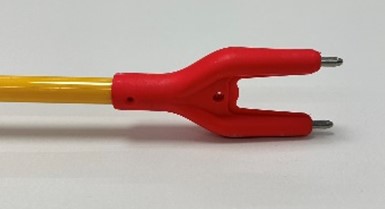Japan's cattle population continues to decline

Beef production is also expected to decline in 2024. Inflation is hitting retail beef sales, although consumption in the foodservice sector through increased foreign visitors will help overcome the dampening effect of inflation.
USDA 's Foreign Agricultural Service (FAS) projects the cattle population will fall to 3.920 million HEAD in 2024 due to increased dairy cow slaughter and a lack of live cattle imports in 2023. Dairy farmers slaughtered more cows in 2022 and 2023 to cope with excess MILK production. Accordingly, the number of dairy cows will decrease by 2024.
Japan will import almost zero live cattle in 2023 and 2024 due to trade difficulties such as weak economic growth and high transport costs, as well as sluggish demand caused by a narrowing price gap between domestic and imported beef calves.
Starting beef breeding cow numbers in 2024 will decline as struggling small farmers go out of business and overall calf production in 2024 will decline accordingly.
The FAS expects cow culling to reduce excess milk production to end in early 2024 once milk supply and demand have been rebalanced. After this, the slaughter rate of dairy cows will drop to normal levels. In turn, total slaughter and total beef production in 2024 will decrease compared to last year.
According to the latest statistics released by the Ministry of Agriculture, Forestry and Fisheries (MAFF), as of February 1, 2023, the number of beef cattle operators in Japan decreased by 5% compared to 2022, although the total beef cattle population increased by 3% . Difficult market conditions for livestock production, namely high costs and low market prices , have forced many farmers raising fewer than 200 head of cattle out of the market.
Read together with it:
- Парагвай: Экспорт субпродуктов является растущей отраслью и уже достиг 95,4 млн долларов СШАЭкспорт говяжьих субпродуктов в этом году значительно вырос. К концу августа выручка составила 95,4 млн долларов США по сравнению с 54,6 млн долларов США на тот же конец прошлого года. По данным SENACSA, в конце августа этого года было экспортировано 51 миллион килограммов мяса по сравнению с 33,7 миллиона килограммов на конец того же месяца прошлого года. Экспорт субпродуктов увеличился на 51,3%....
- Министерство сельского хозяйства США представило план по снижению цен на говядинуПоголовье скота в стране находится на самом низком уровне за последние 75 лет, в то время как спрос на говядину вырос на 9% за последнее десятилетие. Поскольку увеличение поголовья скота в стране требует времени, Министерство сельского хозяйства США (USDA) уже сейчас инвестирует средства, чтобы сделать эти рынки менее волатильными для скотоводов в долгосрочной перспективе и более доступными для по...
- В Кремле пообещали ответ на санкции сообразно интересам РоссииДмитрий Песков В Кремле начали анализировать введенные санкции для разработки ответных мер, заявил пресс-секретарь президента России Дмитрий Песков, передает корреспондент РБК. «В настоящий момент анализируются те санкции, которые определены. Будем делать то, что наилучшим образом соответствует нашим интересам», — сообщил Песков, отвечая на вопрос об ответных мерах России. 19-й пакет санкции Еврос...
- США ввели санкции против президента КолумбииПрезидент Колумбии, его жена и старший сын, а также глава колумбийского МВД попали под санкции США из-за трафика наркотиков из Колумбии в Штаты. Бессент обвинил Петро в отказе пресечь деятельность наркокартелей Густаво Петро Минфин США ввел санкции против президента Колумбии Густаво Петро, сообщается на сайте ведомства. «Президент Петро позволил наркокартелям процветать и отказался пресечь их деят...
- Чего ожидать от «одной из самых рискованных» поездок ТрампаДональд Трамп начал турне по Азии, в ходе которого встретится с лидерами ключевых стран, включая Си Цзиньпина. Почему эта поездка может оказаться сложнее, чем недавние визиты в Европу и на Ближний Восток — в статье РБК Дональд Трамп Какие встречи запланированы в ходе турне Президент США Дональд Трамп вылетел из Вашингтона поздним вечером в пятницу, 24 октября, и утром в субботу его борт приземлитс...
- Callas spoke about the EU's joy over new US sanctions against Russia.The European Union welcomes the US "signals" regarding RUSSIA, Kallas said. She called Washington's new sanctions against Rosneft and LUKOIL a "signal of strength" and agreement between Europe and the US. Moscow considers the sanctions illegal.The European Union approves the US imposition of new sanctions against Russia, European Union Foreign Minister Kaja Kallas told reporters. Kallas published ...



























































